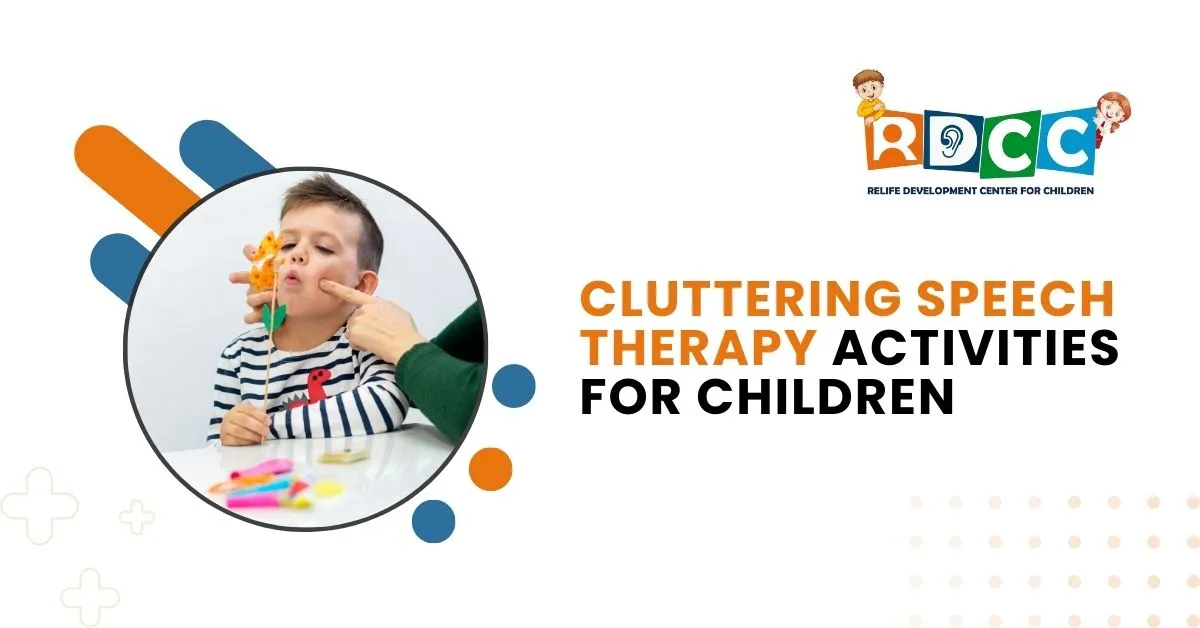
Cluttering is a fluency disorder that affects a child’s ability to speak in a clear and organized manner. Unlike stuttering, which is characterized by interruptions in speech, cluttering often presents as rapid, disorganized, or unintelligible speech patterns. Children with cluttering may speak too quickly, skip words, or fail to structure their sentences effectively, making it difficult for others to understand them. This condition can also lead to frustration, anxiety, and social challenges, as clear communication is essential for academic performance and social interactions.
The good news is that cluttering is treatable, and with the right therapeutic interventions, children can learn to control their speech patterns and develop clearer, more organized communication skills. Speech therapy activities for children with cluttering focus on slowing down their speech, improving articulation, and fostering a structured approach to verbal expression. By integrating fun and engaging activities, speech therapists can help children become more aware of their speech habits, allowing them to practice pacing, breath control, and self-monitoring techniques in a safe, supportive environment. This process not only improves fluency but also boosts a child’s confidence in their ability to communicate effectively.
Engaging Speech Therapy Activities to Reduce Cluttering in Children
Cluttering, a fluency disorder that causes rapid, irregular speech, can be challenging for children. Here are some effective, enjoyable activities to help children slow down, speak clearly, and improve their communication skills.
Pacing Boards
- Activity: Create or use a board with multiple sections, guiding the child to tap each section as they say a word in their sentence.
- Goal: Helps children control their speaking speed, encouraging a steady, clear rhythm.
Breath Control Exercises
- Activity: Practice slow, deep breathing by blowing bubbles or feathers and using pauses during speech.
- Goal: Teaches breath support and pacing, helping kids slow down their speech naturally.
Need help with cluttering speech therapy for your child? Contact us today for expert guidance and fun, effective exercises to improve their communication skills.
Choral Reading
- Activity: Read short passages together, following a consistent speed and rhythm.
- Goal: Choral reading models appropriate pacing and fluency, which can improve clarity and reduce cluttering.
Structured Storytelling
- Activity: Use picture sequences to help the child structure their thoughts before speaking.
- Goal: Encourages organized thinking, allowing children to express themselves without rushing.
Tactile Feedback Tools
- Activity: Use tactile tools (like finger tapping) to mark each syllable or word.
- Goal: Gives children feedback on pacing, helping to reduce speech cluttering by focusing on each word.
Self-Monitoring Techniques
- Activity: Record the child’s speech and review it together, identifying where cluttering occurs.
- Goal: Encourages self-awareness and the development of skills to self-correct.
Pausing Games
- Activity: Practice pausing at punctuation marks or after each sentence when reading aloud.
- Goal: Teaches children to add natural pauses, improving the clarity and flow of their speech.
Use Visual Cues
- Activity: Place visual aids (e.g., a stop sign) as reminders to slow down and speak carefully.
- Goal: These visual cues act as gentle reminders to slow their speech and stay organized.
Mindful Speaking Exercises
- Activity: Encourage the child to speak slowly, concentrating on each word, especially with short, simple sentences.
- Goal: Builds mindfulness in speaking, which helps improve fluency and reduces cluttering.
Each of these activities makes speech therapy fun and interactive, helping children practice clear, organized communication in a structured, supportive way. Regular practice of these techniques can lead to lasting improvements in speech clarity and confidence.
Frequently Asked Questions
How to treat cluttering in speech therapy?
Cluttering can be treated by practicing slow speech, organizing thoughts before speaking, and using techniques like breath control and pausing.
What is an example of cluttering speech?
An example of cluttering speech is when a child speaks too fast, skips words, or jumbles sentences, making it hard to understand.
How to do speech therapy for children?
Speech therapy for children includes fun activities like games, reading exercises, and pacing techniques to help improve speech clarity and fluency.
Conclusion
cluttering can be a challenging speech disorder, but with the right therapy techniques and consistent practice, children can significantly improve their communication skills. Through activities like pacing exercises, breath control, and structured storytelling, children can learn to slow down, organize their thoughts, and speak clearly. It’s important to remember that every child progresses at their own pace, and with the support of skilled speech therapists and engaging exercises, overcoming cluttering is entirely achievable. By fostering a positive, encouraging environment, we can help children gain confidence in their speech, ensuring they have the tools they need for effective communication and success in both social and academic settings.




